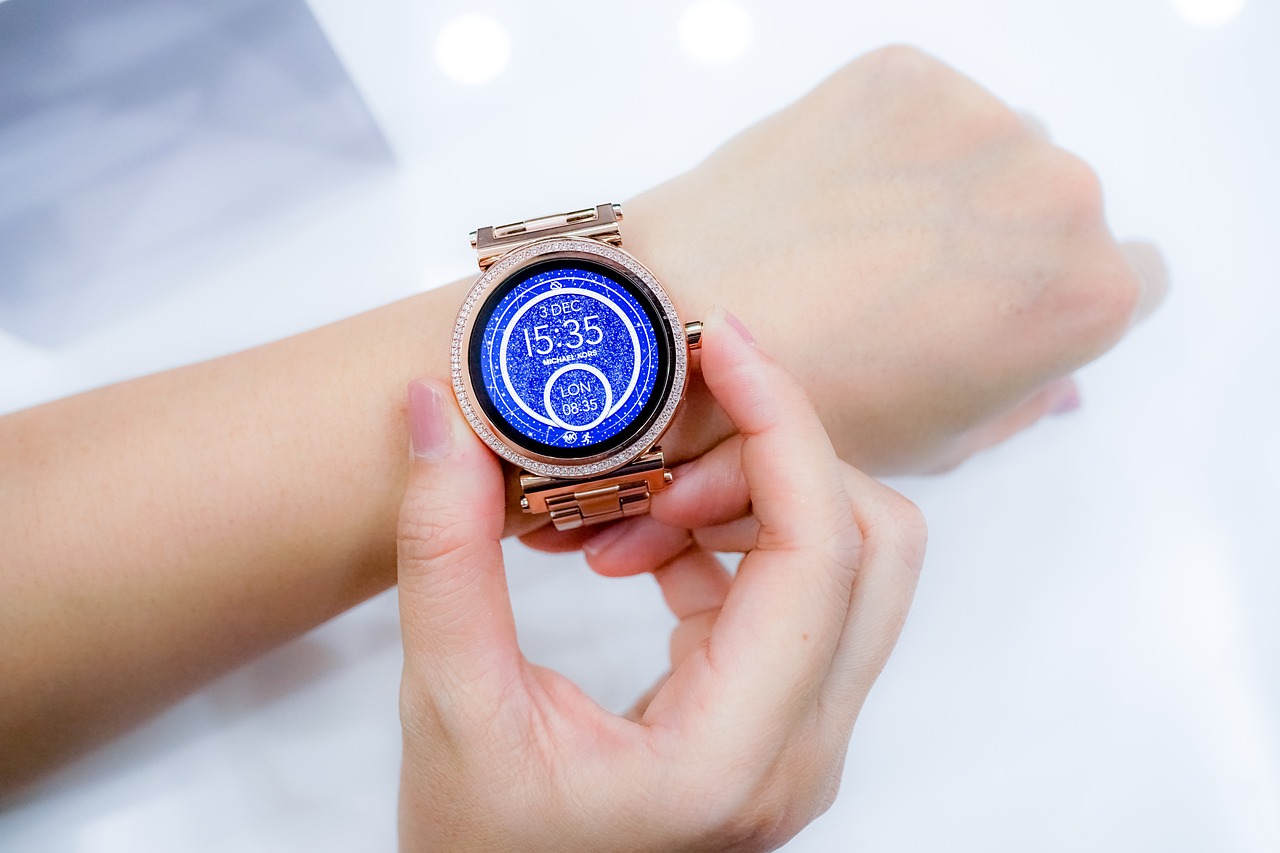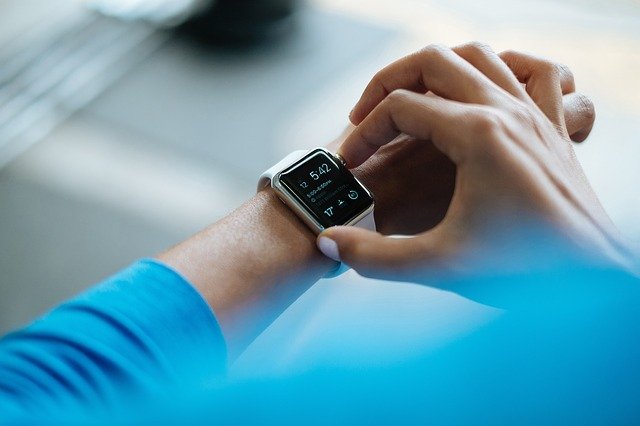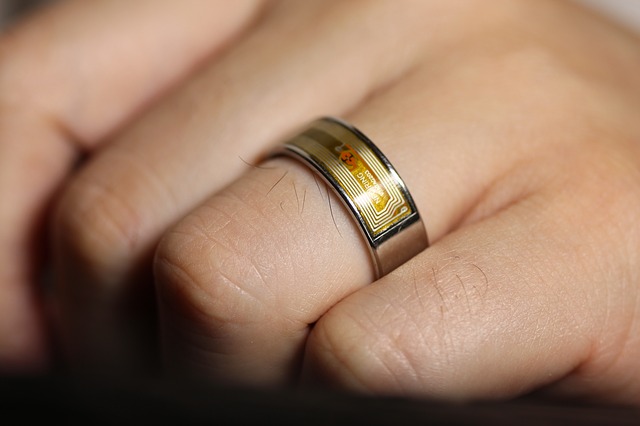Physical Address
304 North Cardinal St.
Dorchester Center, MA 02124
Physical Address
304 North Cardinal St.
Dorchester Center, MA 02124

Upgrading to Future

Upgrading to Future

The world is changing at such a rapid pace that most of us think we cant chase its speed. This is where a use and benefit of smart wearable comes in place.
We are either busy or become careless in doing most of the tasks & the prior most thing to do is stay Healthy & Updated enough. Both of these works can be laid on the ever performing Techie Gadgets we get now-a-days.
The smart wearable devices are those which can be easily used, carried and are smart functionally.
Few examples are Smart Watches, smart monitors, smart rings,etc.
It is also called the wearable technology as these products can be worn easily on any part of the body and can perform various functions by connecting to the internet.

Once connected to the internet, they can transfer the useful data for us and give results.
In future these wearable will be used to directly connect to a doctor to monitor our vitals collected by the smart devices. The benefit of this will help in saving time from traffic while visiting a doctor.
The devices have proven their functionality in the past and also will be useful in future. The future safety is in Digital hands, as these can help in monitoring heart rate and who knows, they may even call a help in future needs automatically.
Most smart garments are produced using advanced materials with connected hardware.

Then, at that point, sensors and extra equipment are implanted for additional smart useful features.
Smart clothes can associate with applications on cell phones or programming on secondary gadgets, for example, workstations and PCs through Bluetooth or Wi-Fi.
Through the keen sensors, these shrewd pieces of clothing gather action measurements and key biometrics.
The information is sent to AI-fueled applications on your cell phone, to assist with your well being and performance.
We see it much too often: a warehouse user sets down their mobile device, only to have it mistakenly dragged down the conveyor line. This is just one example of a problem that may be easily avoided if their organisation adopts wearable technology.
The most forward-thinking distribution facilities and warehouses in the country have discovered that these ergonomic devices are the ideal optimising answer. Indeed, 79% of wearable users believe that wearables are or will be strategic to their company’s future financial success. That result comes as no surprise given the rising use of wearable electronics in both business and daily life.
Wearables give you the ability to perform hands-free picking, sorting, and scan verification. They boost your supply chain by creating a new standard of efficiency, since they have been shown to increase turnover and modify the way staff work. This technology has the potential to solve your warehouse’s problems; here are the top five ways your firm can benefit from implementing these solutions.
Also the new innovations in smart wearable tech makes the journey of the AI & robotics much promising in the future.
Wearables include a variety of functions that result in a 15% boost in production. This is critical in today’s “need-it-right-now” culture. Consumers now want faster deliveries, posing new hurdles for corporations and their supply chains. These hands-free scanners are useful for tasks that need the constant use of hands, such as loading a truck, handling huge packages, making a transaction, and so on. These devices free up your fingers whenever two hands are necessary, allowing you to pick faster and increase productivity dramatically.
In operation processes, every second matters. Workers can accomplish jobs faster with enhanced situational awareness and hands-free gadgets. Putting down and taking up mobile laptops several times during the day wastes time. It unnecessarily lengthens your turnaround time. Wearables reduce disruptions in your productivity, allowing you to produce more quickly. Overall, this implies you’re saving time by reducing the number of minutes you lose.
A hands-free scanner and picking system is proven to reduce errors by 39%¹. Malfunctions and machine issues are common in every warehouse, but with wearables you can improve accuracy in your operations. Employees are able focus all of their attention to the task at hand, not having to stop to pick up their technology. This uninterrupted workflow is a large component of the increased task accuracy.
Wearable technologies will alter the way your supply chain personnel operate, no matter where they are. Wearables will increase any employee’s environmental awareness on the loading docks, warehouse floor, assembly line, or any other demanding location. These gadgets, which are made of soft and malleable rubber straps, are meant to keep employees happy – pain will not be a distraction. Safety difficulties, accidents, and replacement expenses may all be prevented by being actively engaged with their environment.
Wearable technology is considered too pricey by 63 percent of Americans. Because most wearables are meant to be small, practical, and fashionable all at the same time, they tend to be costly. One disadvantage of the wearable trend is its high price for both individual and business users.
Wearables are particularly vulnerable to cyberattacks since they are always linked to the internet. These devices may not always have strong encryption to secure personal information. If you want to supply wearables to your staff, make sure they have cloud-based security solutions to secure your data from hackers and cybercriminals.
The information gathered is shared online, digitally, and/or with third parties for marketing reasons or with healthcare insurance providers. The data might be used by insurance firms to tailor health policies and rates to the user’s preferences, activities, and pre- existing medical issues. The danger of data being used for illicit purposes should not be overlooked. Users’ awareness and comprehension of data privacy are, for the most part, lacking.
Many wearable gadgets complain about the lack of battery life. Because battery space is restricted, they are unable to run for longer durations, which has an impact on data acquisition. Other technical concerns with wearables include poor user experience, battery life and heating, GPS support, design, size, software reusability and compatibility, restricted communication range, convenience, data manipulation, and lack of encryption.
Apart from this, wearable gadgets are frequently linked to health hazards such as cancer as a consequence of the type of radiation released by them as a result of direct contact with the skin or prolonged closeness to important organs. Aside from cancer, wearable gadgets have been linked to headaches, dizziness, nausea, and a variety of other health problems. These assertions, however, lack tangible data, necessitating additional in-depth study and investigations to provide a comprehensive picture.